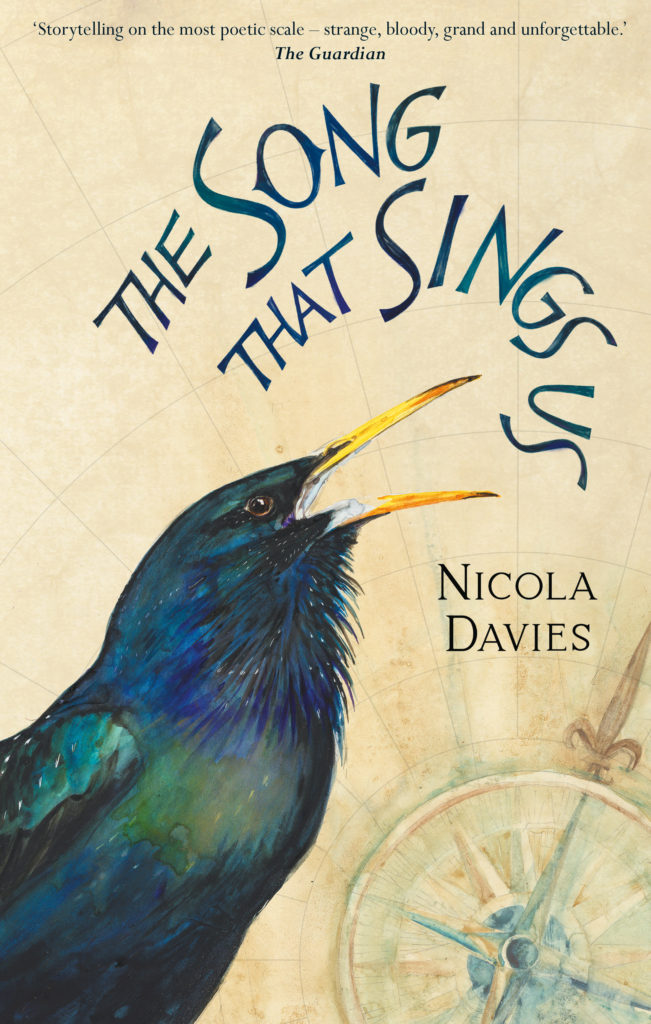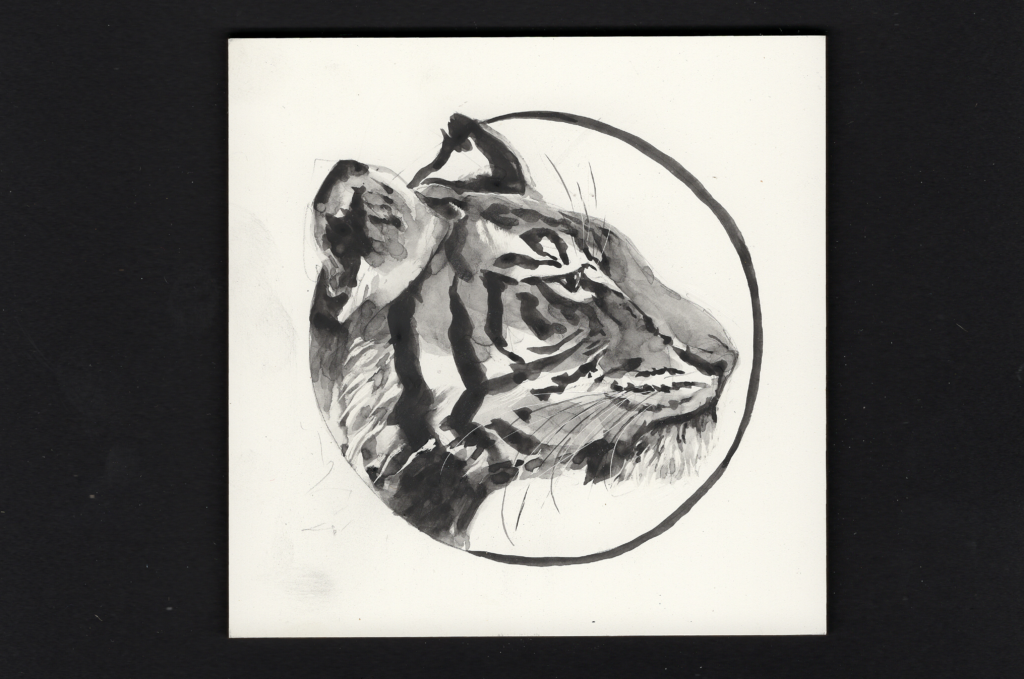Illustrations by Jackie Morris
My novel, The Song that Sings Us has had some lovely things said about it by reviewers and writers. I think my favourite came from Imogen Russell Williams reviewing the book for the Guardian: ‘story-telling at the most poetic scale, strange, bloody, grand and unforgettable’. Comments like this are wonderful of course, but what every writer wants is feedback from real readers. Thank you to Grace, age 11, in National Geographic magazine for saying that the book was ‘amazing in every way and so THRILLING’. As more and more readers find this story, I’m getting more lovely feedback and also lots of questions about the characters.
So here is a bit of background for some of the main ones. I won’t describe the physical appearance of the human characters – I know how they look in my head, but it’s how they look to you as the story plays like a film in YOUR head that counts! I want you to be able to imagine yourself inside any of them, the way I put myself inside Eowyn in Lord of the Rings, but here is a little background information to help you imagine my cast!
Toren Sisal
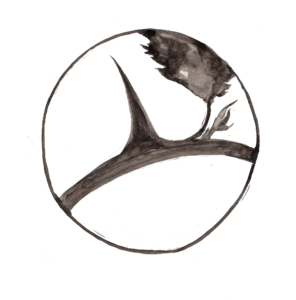
Toren is the mother of the three main human characters, Harlon, Ash and Xeno. At the time of the story she is still a relatively young woman, in her late thirties. She’s a little above average height I think, strong and athletic. Toren is the daughter of a retired military man and a beautiful heiress. She trained in the military herself as part of an elite force a bit like our SAS, but shortly after her training she ran away to join the eco-rebel forces fighting oil exploitation in the White Sea, my world’s equivalent of the Arctic. Toren is a warrior and gives the care of her first born daughter, Harlon, to her partner Tui, while she goes on to be a leader of a very successful and rather violent group of eco-activists, Green Thorn.
At the time of Tui’s death she is travelling back to rejoin and revitalise Green Thorn. But she discovers she is pregnant with twins and, to protect her children, she runs to the mountains to raise them in isolation giving herself a false name – Breen Avvon.
Toren isn’t naturally motherly to her three children, eldest daughter Harlon and younger twins, Ash a boy and Xeno a girl. But she tries. She loves her children with a deep, fierce passion; she cares for them, educates them, and prepares Harlon in particular to be a warrior, like her. When the time comes, something in Toren is relieved to return to the life of an activist and soldier, but this time without bloodshed… well, not much bloodshed. She does still shoot somebody in the head…
Harlon
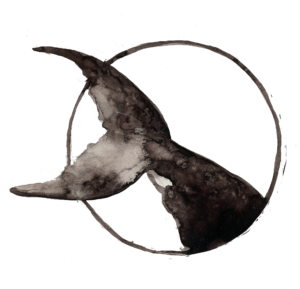
At the start of the story, Harlon is in her mid-teens and has been raised by her mother to be a warrior, the protector of her younger siblings, Ash and Xeno. This has created a little separation between her and the twins.
Harlon’s sense of responsibility for them has made her a bit stiff and fierce at times. The fact that she doesn’t have the gift of Listening (the ability to tune in to the thoughts of animals) as they do, makes her feel very different from her siblings. Sometimes she feels she is the sensible one while they are both a bit dreamy, and sometimes she feels like the stupid one because she can’t do what they do.
Harlon is strong, fit, and well trained, but doubts her abilities at first, blaming herself for things that are beyond her control. But she is more like her mother than she realises: mentally tough and resilient. Yet there is something more to Harlon than that. She is Tui’s child too, and although she lacks his talent for Listening, she has his ability to connect in another way. The song he and his friends, the humpbacked whales, have planted inside Harlon’s brain is there waiting for the right moment. Harlon’s intelligence and bravery, her ability to analyse and then act, are ultimately what save the world.
Xeno
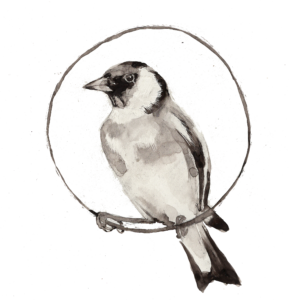
Xeno’s words pepper the story of The Song that Sings Us. She speaks in riddles but riddles that prove to have a deep meaning. Living in isolation on the mountain has allowed her family to get used to her strange, disconnected way of communicating and her eccentric behaviour. They come to accept the fact that Xeno is really more comfortable communing with birds than with humans.
But Xeno hasn’t really chosen to be this way. Her Listener power is the strongest of anyone in the story, stronger even than that of her father, Tui. So strong, in fact, that she cannot tune out the consciousness of birds. She connects with them automatically, like a radio tuned into multiple stations and perpetually on. Some of what flows into her mind she loves, but more often it leaves her overwhelmed, confused, and not really able to exert her own will or personality.
She seems vulnerable, fragile, and the character least able to take care of herself. Yet she is the one who engages most directly in conflict with the evil leader of the Automators, Doada Sisal. It is the making of her. She finds her will to resist him, and she finds a power that she thinks does not belong to her, but to the birds with whom she connects so powerfully. But she discovers at the end of the book that she is indeed powerful, and that she can be herself.
Ash
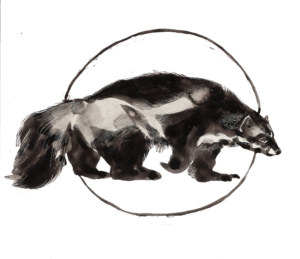
I’m often asked (or even sometimes told) which of the characters is most like me. Harlon and Toren are who I would like to be: warriors with the ability to think fast and make good decisions under pressure. Aspects of Xeno, her alienation from the world, and her struggle to make herself feel autonomous, are like me. But the human character who was easiest to write was Ash. He has a strong sense of fairness and looks at the world with clear eyes which sometimes find human behaviour strange or even ridiculous. He is the one who I used to make a commentary about some of the aspects of the Automators plans, which I find unacceptable in our world.
Ash loves his sister Xeno as if she were a part of himself. He looks up to Harlon and his mother and is afraid when his support system is taken away. But Ash is pretty flexible, and very resilient – he can adapt to hardship very easily and find something to make him happy in the simplest of things. He has a wry, sideways sense of humour, which he soon finds he shares with the Gula.
If you ask Ash at the start of the story, when he is about 12, where he would like to spend his life, he would say, ‘here on the mountain, of course’. He would never expect to end up on the mast of a ship sailing the oceans, and absolutely loving it. He is an unexpected adventurer, who lives in the moment.
Doada Sisal
Doada is desperate to conceal any information in case it undermines his rise to complete power in Rumyc. He was his mother’s darling son, spoiled by her. But he had inherited the Listener talent from his father’s side of the family, something his mother would disapprove of. Throughout his childhood he conceals this talent and through that grows a desire for secrecy and control and a taste for cruelty. He sees that his greatest chance of complete control, of complete power, lies through the Automators and their rise to power. So he must rid himself of the Listener power, which he does through a hideous self experiment.
Like his mother, Doada likes beautiful things, clothes, objects, and any kind of luxury. He sees them as his right. He’s good at manipulating people but has no real relationships in his life. No one would be good enough for him and anyone who got close might find out things he would be too ashamed to reveal. Doada is vain and deluded to the point of insanity. He is the only character who I would describe visually: he looks exactly like the UK politician Jacob Rees Mogg.
The Gula
The Gula is a wolverine, an animal with a bad reputation with humans for wanton destruction. But wolverines are just supreme survivors, incredibly tough and with a steely determination to get what they want. I did a lot of research about wolverines for another, non-fiction book, and unearthed lots of recent discoveries made through radio tagging. These studies in some ways reinforced the image of the wolverine as an indomitable survivor – one radio-tagged wolverine went straight up a 2000 foot vertical rock face in winter, in a blizzard, in the dark, because it was the shortest route to the next place it wanted to be. But they also showed that wolverines are not so solitary, that their bonds with their children are lifelong, reinforced by children visiting both mum and dad’s territories to hang out with them as adults.
The Gula’s vision of the trail came out of research too. Many indigenous hunters, when tracking animals using sight, sound, and smell cues, plus knowledge and memory, report the trail manifesting as a golden thread that they can actually see. It isn’t hard to imagine that an animal with such acute senses and high intelligence as a wolverine might experience something similar.
The Gula is wise, and intuitive. She trusts her senses, and what they tell her, and she trusts her brain’s ability to interpret that sensory information and give her an unshakeable direction in which to go. Having lost her own cubs, Ash becomes her cub substitute and she will never, ever give up on him. But in following Ash, she has experiences that no wolverine would normally have, and it makes her into something even more extraordinary.
Enkalamba
I find it incredibly moving that many people’s favourite character is Enkalamba and that her story arc moves many readers to tears. She is another character who grew out of research for other books, and from my own interest in elephants and in animal intelligence and consciousness.
Elephants, like humans, are social beings.They communicate with sound, smell, and touch, and form strong life-long bonds with family members and friends. They rely on each other and in particular on the matriarch of their group, who is the repository of knowledge. Her long life and long memory are the group’s insurance policy against drought and famine as the matriarch remembers where food and water can be found in a range of different seasons and conditions.
Studies of elephants show that they grieve over dead relatives and friends and even return to the place where a loved one died. So they are complex beings but their huge brains are arranged very differently from our own. Experiments have shown that they are very intelligent but the nature of that intelligence and the workings of their minds we can only guess at. Enkalamba finds human minds very different, and very difficult to navigate, but she is bright and very motivated to understand. Without any of her own kind left to take to she seeks communication with other beings and through that feels, ever more strongly, that all life is one kin. And I agree with her.
Skrimsli
Everyone’s favourite tiger sea captain! Skrimsli is a hero in a striped coat. His long associations – both very bad and very good – with humans have made him into a being not quite ‘tiger’, not quite ‘human’, but entirely himself.
I’m not going to say much about him here as I’m right in the middle of writing his backstory for the next book in the series. But he is based on a Siberian tiger, not a Bengal, so he’s a tiger whose ancestors hunted in the boreal forests of the north, and who is used to frosts and snow.
In writing about Skrimsli I’ve thought and read quite a bit about how language influences our thinking, on the sorts of thoughts and the sorts of communication that are only possible with language. Because language is what changes Skrimsli. I’m not sure what all his story is yet but you’ll be able to read about it soon.
Pick up a signed copy of The Song that Sings Us here!
Pick up an unsigned copy here


